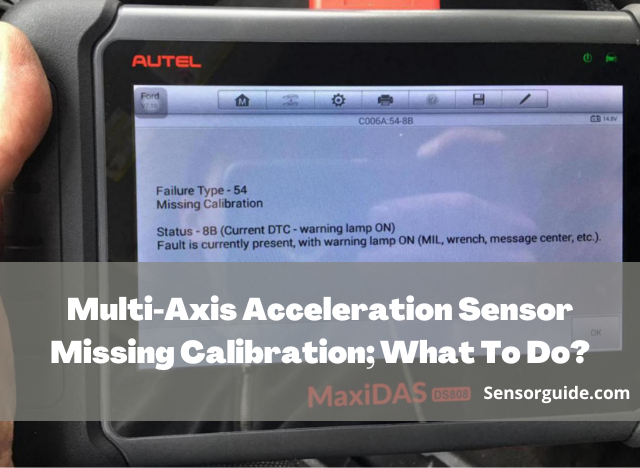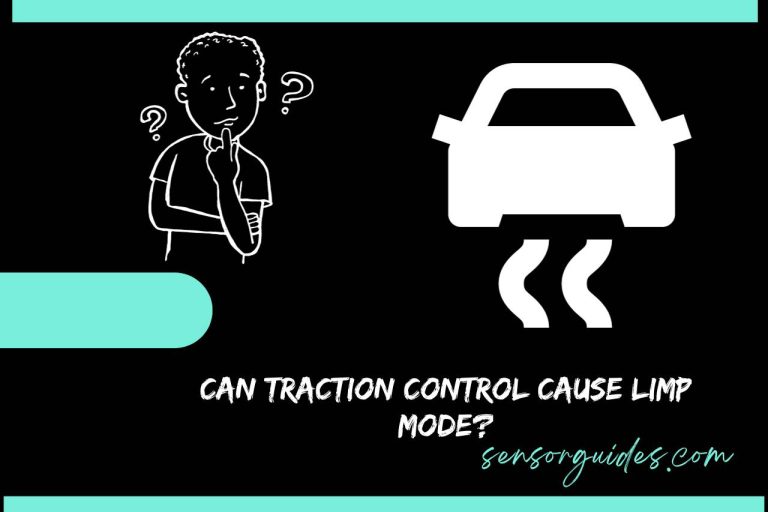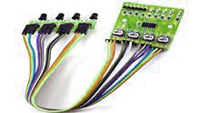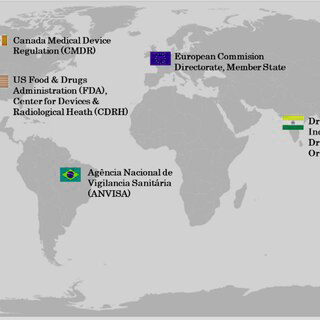“Into the Engine’s Mind: Navigating the LS9 Map Sensor Frontier!” – 2023
Introduction
Brief Overview of LS9 Map Sensor
The LS9 map sensor is an essential aspect within the engine management system of LS9 and LSA supercharged automobiles. It plays an essential position in optimizing engine performance by means of as it should be measuring manifold air strain (MAP), an essential parameter for gasoline injection and ignition timing. This sensor’s potential to handle excessive boost pressures makes it important for achieving the energy and performance of these excessive-performance engines.
The LS9 map sensor, additionally called the manifold absolute strain sensor, is an critical element of the engine management gadget in LS9 and LSA supercharged engines. It is liable for measuring the air pressure within the consumption manifold, that’s an important parameter for determining the air-gas ratio and ignition timing.
The LS9 map sensor is a 3-bar sensor, which means that it can degree raise pressures as much as 43.5 psi (3 bar).This is drastically higher than the boost pressures produced through maximum evidently aspirated engines, which commonly perform at pressures beneath 1 bar. The excessive increase stress functionality of the LS9 map sensor is critical for the right operation of the LS9 and LSA supercharged engines.
The LS9 map sensor is a piezoresistive sensor, which means that it really works by measuring the trade in resistance of a silicon diaphragm as it’s subjected to strain. The alternate in resistance is then converted into an electrical signal that is dispatched to the engine control module (ECM). The ECM uses this signal to calculate the air-fuel ratio and ignition timing.
The LS9 map sensor is a crucial aspect of the engine management system and performs a crucial function inside the overall performance and efficiency of the LS9 and LSA supercharged engines. By correctly measuring the air stress inside the intake manifold, the LS9 map sensor helps to ensure that the engine is running at its peak performance.

Here are some of the important thing specifications of the LS9 map sensor:
- Operating strain variety: zero-43.5 psi (zero-three bar)
- Output sign: 0-five volts
- Accuracy: ±1% of complete scale
- Temperature variety: -40°C to +150°C
The LS9 map sensor is a long lasting and reliable sensor this is designed to resist the tough situations of the engine compartment. It is likewise particularly smooth to put in and service.
If you’re considering upgrading your LS9 or LSA supercharged engine, then you definitely must keep in mind upgrading to an LS9 map sensor. This will help to make sure that your engine is working at its height performance and performance.
Importance in Engine Performance – LS9 Map Sensor
The LS9 map sensor immediately influences engine overall performance in numerous approaches:
- Air-Fuel Ratio Control: By presenting correct MAP readings, the engine manage module (ECM) can exactly modify the air-fuel mixture, making sure ideal combustion and gasoline efficiency.
- Ignition Timing Optimization: MAP facts is likewise used to decide the best ignition timing, ensuring efficient power delivery and minimizing the threat of knock or detonation.
- Boost Pressure Monitoring: The LS9 map sensor can degree enhance pressure up to 3 bar (43.Five psi), permitting the ECM to regulate engine parameters thus for most efficient performance below enhance conditions.
Understanding Map Sensors
What is a Map Sensor?
A map sensor, additionally known as a manifold absolute strain sensor, is a tool that measures the pressure of the intake manifold, the part of the engine wherein air is gathered earlier than entering the cylinders. This pressure analyzing is vital for the engine control module (ECM) to determine the air density getting into the engine, a critical thing in gas injection and ignition timing calculations.
Role in Engine Management
The LS9 map sensor performs a relevant role in engine management by providing real-time MAP records to the ECM. This statistics is used to:
- Calculate Engine Load: MAP is a key indicator of engine load, allowing the ECM to adjust fuel injection and ignition timing accordingly.
- Compensate for Altitude Changes: MAP readings are used to catch up on modifications in atmospheric pressure due to altitude versions, making sure most appropriate engine overall performance across a extensive range of altitudes.
- Detect Boost Pressure: In forced induction engines, MAP sensors can measure raise pressure, permitting the ECM to modify engine parameters for greatest power and efficiency underneath boosted situations.

LS9 Map Sensor Specifics
The LS9 map sensor is a 3-bar sensor, designed to deal with the high raise pressures produced via the LSA and LS9 supercharged engines. This sensor operates at the precept of piezoresistive strain sensing, in which a silicon diaphragm modifications resistance with applied strain. The ensuing electrical signal is then dispatched to the ECM for interpretation.
Key specs of the LS9 map sensor consist of:
- Operating Pressure Range: zero-43.5 psi (zero-3 bar)
- Output Signal: zero-five volts
- Accuracy: ±1% of complete scale
- Temperature Range: -40°C to 150°C
The LS9 map sensor is a vital issue for achieving the strength and efficiency of LS9 and LSA supercharged cars. Its correct MAP readings ensure most fulfilling engine overall performance throughout a huge variety of operating conditions.
Troubleshooting and Maintenance
Diagnosing Common Issues
While the LS9 map sensor is a dependable element, sure factors can contribute to its malfunction or decreased overall performance. Here are some not unusual problems and their diagnostic steps:
- Erratic Engine Performance: If the engine famous erratic conduct, along with hesitation or misfiring, the LS9 map sensor is probably providing erroneous readings. Use a diagnostic tool to reveal MAP facts and check for inconsistencies.
- Check Engine Light Illumination: The take a look at engine mild may also illuminate if the ECM detects an trouble with the LS9 map sensor. Use a diagnostic code reader to discover any unique blunders codes associated with the sensor.
- Physical Damage: Inspect the map sensor for any signs and symptoms of bodily harm, inclusive of cracks, corrosion, or loose connections. Repair or update the sensor if important.
Tips for Efficient Maintenance
To make certain the durability and choicest performance of the LS9 map sensor, comply with those maintenance recommendations:
- Regular Inspections: Periodically check out the map sensor for signs of harm or wear. Clean the sensor housing and electric connections to save you corrosion or infection.
- Avoid Excessive Vibrations: Excessive vibrations can cause harm to the sensor’s internal components. Ensure proper mounting and alignment of the engine components.
- Prevent Fluid Exposure: Avoid exposing the map sensor to fluids, along with oil, coolant, or cleansing agents. These fluids can harm the sensor’s delicate additives.
Extending the Lifespan of LS9 Map Sensor
By adhering to proper protection practices and warding off capability hazards, you may substantially enlarge the lifespan of the LS9 map sensor:
- Regular Maintenance Schedule: Incorporate regular inspection and cleaning of the map sensor into your automobile’s protection habitual.
- Protective Cover: Consider putting in a protecting cowl around the map sensor to shield it from debris and harsh environmental situations.
- Gentle Handling: Handle the map sensor with care throughout set up, preservation, or any other methods.
Benefits of Upgrading to LS9 Map Sensor
Improved Engine Efficiency
Upgrading to an LS9 map sensor gives numerous benefits for engine overall performance and ordinary automobile operation:
- Accurate MAP Readings: The LS9 map sensor provides particular MAP information, enabling the ECM to optimize air-gas aggregate control for efficient combustion.
- Enhanced Fuel Economy: Improved gasoline financial system is finished because of the engine’s ability to function at top performance with accurate gas injection and ignition timing.
- Reduced Emissions: Efficient combustion reduces the production of harmful emissions, contributing to a cleanser environmental impact.
Enhanced Fuel Economy
The LS9 map sensor’s capacity to provide correct MAP readings immediately interprets into improved gasoline financial system. By optimizing fuel injection and ignition timing, the engine can perform more successfully, consuming less gasoline while turning in the equal strength output.
Performance Boost
The LS9 map sensor’s better precision and reliability make a contribution to a major development in engine overall performance. Accurate MAP statistics lets in the ECM to optimize engine parameters for optimum energy output and responsiveness. Upgrading to an LS9 map sensor affords a compelling mixture of progressed engine efficiency, better gas economy, and a substantive performance improve. If you are looking to optimize your vehicle’s overall performance and maximize its gas economy, upgrading the LS9 map sensor is a worthwhile investment.
Conclusion
The LS9 map sensor is an essential element of the engine control device in LS9 and LSA supercharged vehicles. It’s a correct dimension of manifold air stress plays a essential position in optimizing engine overall performance, ensuring fuel efficiency, and reducing emissions. The sensor’s high increase strain functionality is important for reaching the strength and efficiency of these high-performance engines.
Upgrading to an LS9 map sensor offers a variety of blessings, including:
- Improved engine efficiency
- Enhanced gas economic system
- Performance increase
- Accurate air-fuel mixture manage
- Reduced emissions
If you’re seeking to optimize your LS9 or LSA supercharged automobile’s overall performance and maximize its gas economy, upgrading to an LS9 map sensor is a worthwhile funding.
FAQs
What is the reason of a map sensor?
A map sensor, also known as a manifold absolute strain sensor, measures the strain of the air within the consumption manifold of an engine. This facts is used by the engine manipulate module (ECM) to decide the air-fuel mixture and ignition timing.
How does a map sensor paintings?
A map sensor typically uses a piezoresistive diaphragm to measure strain modifications. As the pressure inside the consumption manifold will increase, the diaphragm deflects, causing an alternate in resistance. This alternate in resistance is then converted into an electrical signal this is sent to the ECM.
What are the signs of a faulty map sensor?
Symptoms of a faulty map sensor can encompass:
- Check engine light illumination
- Erratic engine performance
- Poor gasoline economy
- Increased emissions
How frequently need to I replace my map sensor?
The frequency of map sensor replacement relies upon on the precise car and riding conditions. However, it’s far commonly advocated to update the map sensor each 50,000 to 100,000 miles.
Can I easy my map sensor?
Yes, you could smooth your map sensor using a soft cloth and a slight cleaning solution. However, it’s important to avoid using harsh chemical compounds or solvents, as those can damage the sensor.
How do I deploy a brand new map sensor?
The installation process for a map sensor will range relying at the specific automobile. However, it typically entails doing away with the old sensor, cleansing the mounting floor, and putting in the new sensor. It is critical to comply with the manufacturer’s commands carefully to make certain proper installation.






